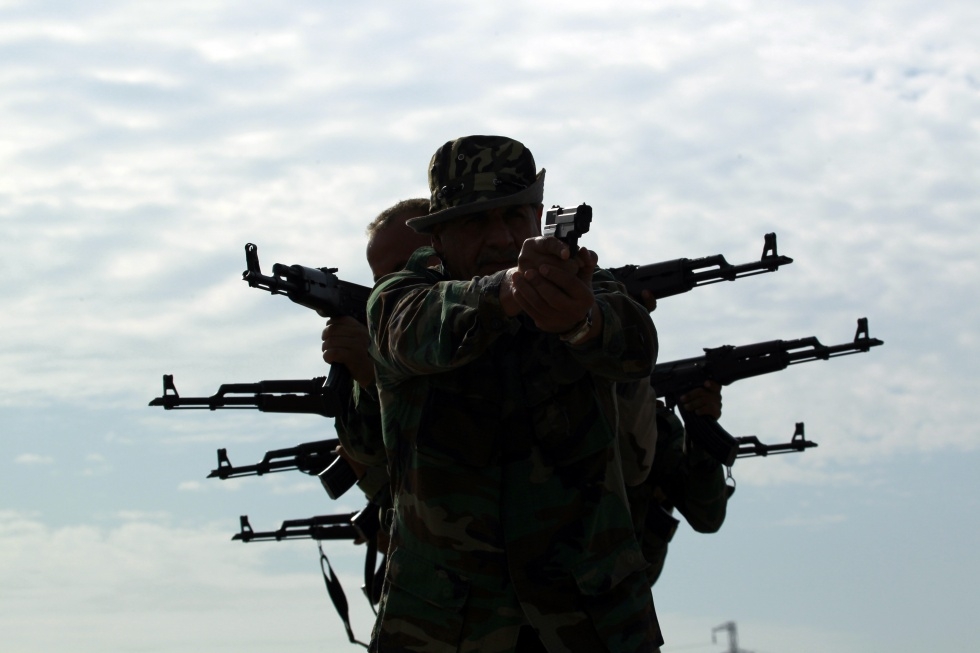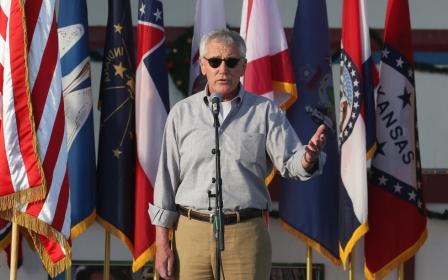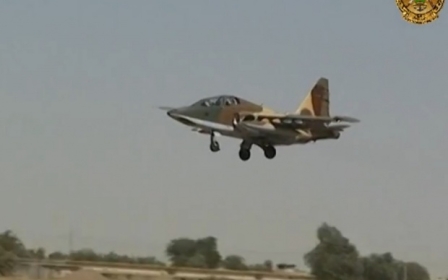Shiite militias deepen Iraq’s sectarian conflict

The emergence of a new Shiite militia in Iraq in the form of "Saraya al-Khorasani" (Khorasani Brigades) points to a deepening sectarian divide and a concomitant rise in Iranian influence. Whilst the militias are undoubtedly indispensable in the fight against the Islamic State (IS) group, there is much less certainty on their long-term impact.
Iraq’s Shiite militias are becoming more sectarian and parochial in their outlook and declared positions as the fight against IS and its allies intensifies. For example, the Khorasani Brigades is named after Iran’s Supreme Leader, Ayatollah Seyed Ali Khamenei - who is referred to as Sayyed Khorasani by his more enthusiastic supporters - and openly declares allegiance to the Islamic Republic.
Iran sees the fight against IS and its allies as an opportunity to deepen influence in Iraq and to develop power centres independent from the Iraqi government.
But as this policy develops, Iranian strategists are at a loss to explain the actual or potential benefits pursuant to deeper Iranian engagement in Iraqi affairs.
A history of militias
The development of non-state actors has been a consistent feature of Iran’s regional policy for more than three decades. The most successful example is the Hezbollah movement in Lebanon, which has extended Iran’s reach to the eastern banks of the Mediterranean Sea.
In neighbouring Iraq, the Islamic Republic began organising dissident Iraqi Shiites in the early years of the Iran-Iraq War. Besides developing the capacity of existing groups such as Hizb al-Daawah (Party of the Islamic Call), Iran established the Supreme Council for the Islamic Revolution in Iraq, which is now known as the Islamic Supreme Council of Iraq.
The group’s armed wing, the Badr Brigades, proved useless to Iran during the eight-year war with Iraq. However, Badr played a pivotal role in establishing Iranian influence in Iraq in the immediate aftermath of the US-led invasion of March-April 2003. Now known as the Badr Organisation and led by the influential Hadi al-Amiri, this paramilitary group is spearheading the fight back against IS.
The insurgency against the Anglo-American occupation (2003-2008) and the parallel Sunni-Shiite sectarian conflict, gave Iran the opportunity to broaden its military influence in Iraq beyond the Badr Brigades.
Significant resources were dedicated to developing the more capable and disciplined factions in Muqtada al-Sadr’s so-called Mahdi Army. Labelled as "Special Groups” by the US military, these factions received advanced training from the Quds Force of the Islamic Revolutionary Guards Corps to fight the Anglo-American occupation.
The Special Groups’ trademark was the so-called explosively formed penetrators, a more advanced and deadly form of the ubiquitous improvised explosive devices (IED) deployed by Iraqi insurgents. The special groups’ tactics wreaked havoc against American and British troops and probably played a direct role in accelerating the British retreat from Iraq.
Some of the special groups were later integrated into the Iraqi army as well as the security forces. Three years after the official ending of the US-led occupation, these structures constitute the most capable, motivated and reliable layers of the official Iraqi armed forces.
IS’s storming offensive in Iraq this June has given fresh impetus to the long-standing Iranian policy of developing Iraqi paramilitary groups. Besides the old Badr Brigades, at least two dozen other militias and paramilitary groups are operating against IS and its allies across western, central and northern Iraq. The most prominent include Asa’ib Ahl al-Haq (League of the Righteous), Kata’ib Hezbollah (Hezbollah Battalions) and the Saraya al-Zahra (the Zahra Brigades).
The most striking feature about the new militias, in particular the Khorasani Brigades, is their open allegiance to Iran. Besides swearing allegiance to Iran’s leader, the Khorasani Brigades use an insignia which bears a strong resemblance to the Islamic Revolutionary Guard Corps (IRGC) standard.
In the past, Iran’s ideological compatriots in Iraq never openly declared their allegiance to the Islamic Republic for fear of alienating Iraqi and wider Arab public opinion. This development speaks to the growing fragmentation in Iraq and the decline of the Iraqi state.
Influence without gain?
Whilst the weakness of official Iraqi armed forces to some extent justifies the deployment of militias and paramilitaries against a deadly foe, nonetheless, there is growing worry on the long-term impact of this trend.
The most obvious problem is the deepening sectarian divide, especially in light of reports that the Shiite militias are wreaking havoc and destruction in Sunni-majority areas, in particular Salahuddin province. Whilst the Shiite militias are not as extreme as IS, nevertheless some of their actions and rhetoric is heightening the sectarian conflict and storing up trouble for the future.
Moreover, the proliferation of the militias is inimical to the long-term viability of the Iraqi state. The Iraqi government is understandably reliant on the militias to contain a massive threat, but it is apparently blind to the dangers of over-reliance on these groups. Long-term threats to the Iraqi state, such as Kurdish nationalism, can only be met by powerful and professional armed forces.
The militias are also a potential problem for their Iranian patrons. Hitherto Iran has had a unified and coherent policy on Iraq centred on shoring up the post-war Shiite led government in Baghdad. During the years of the Anglo-American occupation the development of non-state actors was not inconsistent with this stated policy.
The intensification of support for militias points to growing IRGC influence on Iran’s Iraq policy. This risks fragmenting policy and decision-making with resulting loss of strategic leverage. To be successful in Iraq over the long term, Iran must maintain a coherent and clear-eyed strategic approach and not embrace the politics of sectarianism.
Mahan Abedin is an analyst of Iranian politics. He is the director of the research group Dysart Consulting.
The views expressed in this article belong to the author and do not necessarily reflect the editorial policy of Middle East Eye.
Photo: Iraqi Shiite take part in a training session in the central city of Hillah on October 18, 2014
Middle East Eye propose une couverture et une analyse indépendantes et incomparables du Moyen-Orient, de l’Afrique du Nord et d’autres régions du monde. Pour en savoir plus sur la reprise de ce contenu et les frais qui s’appliquent, veuillez remplir ce formulaire [en anglais]. Pour en savoir plus sur MEE, cliquez ici [en anglais].





